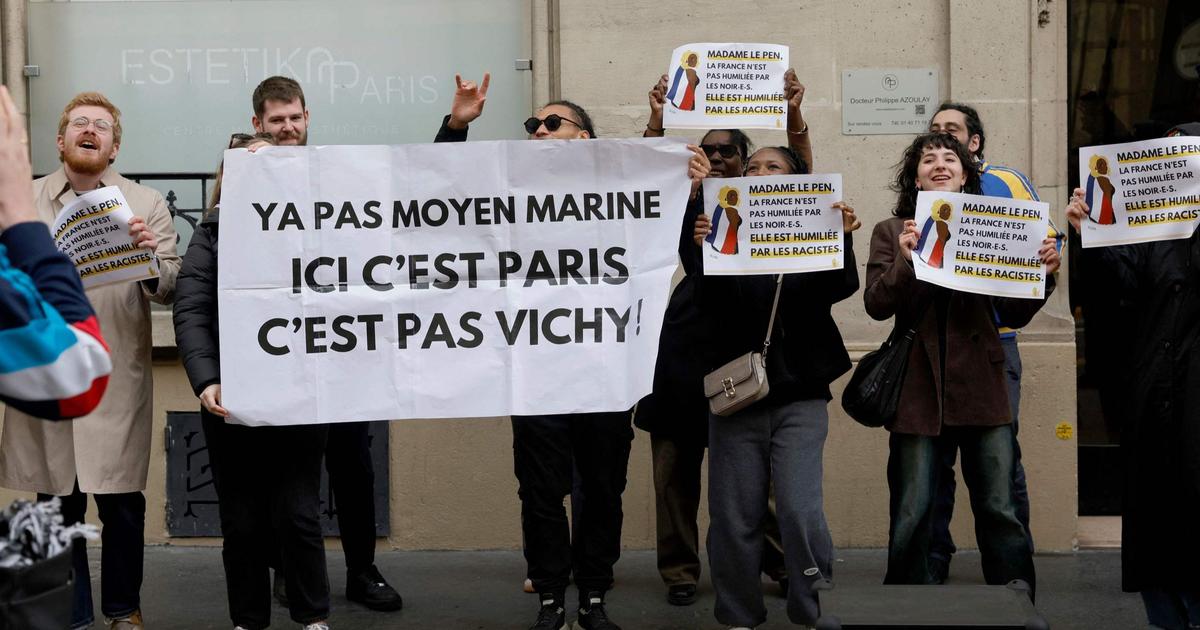Corner of the street dedicated to Admirals Churruca and Gravina, on Saturday in Palma.FRANCISCO UBILLA
Spain still houses 533 urban roads whose names praise General Francisco Franco, honor the military uprising that began or commemorate the repression suffered by the Spanish between 1936 and 1975, according to the latest data provided by the Government in 2020. But this week they have lived two episodes that once again reflect the complications that come with the purpose of erasing these tributes from public places.
In Palma, a massive error presented the 19th century admirals Churruca, Gravina and Cervera as fascists, an argument that later led to the fact that they were actually the names of three warships that had served the rebels in the Civil War (which was not true of the first two, who fought on the Republican side).
In Oviedo, its City Council has had to restore by court order the names of Franco's military that had been removed a year ago.
The judge considered that the commission did not comply with the regulations due to "lack of objectivity" and lack of "pluralism."
The mayor of Palma on the names he removed from the street map: "I don't know who these admirals are"
To this are added the complaints in several cities whose municipalities do not finish erasing the traces of the dictatorial regime.
A glance at the whole allows us to observe that the law of historical memory is not applied in the same way throughout Spain, and also invites doubts if one day it will be possible to finally evict Franco from the national street map.
The first point of difficulty in the task of distancing the Franco regime from the urban plates is that some autonomous communities (for example, Aragon) only dedicate a small paragraph in their own law and are not precise when dictating how to form a memory commission and how it should work.
The composition of the commissions and the presence of historians is essential to prevent errors.
But it is not enough to have experts.
Institutions must follow their advice.
False steps would thus be avoided, such as when the Cáceres City Council removed a coat of arms of the Catholic Monarchs in 2010 because it was considered Francoist, without having properly consulted the opinion of experts.
He had to replace it after the intervention of Antonio Bueno, secretary of the Institute of Heraldic and Genealogical Studies.
A second term of the problem affects those in charge of applying the decisions, beyond the quality of the reports, the constitution of the commissions and their proposals.
And in that the task of the municipalities is decisive, which are the ones that finally execute them.
For example, in Malaga, despite having fully approved the name change of several streets, the posters have not been taken down.
There are the signs for the avenues of Carlos Haya and Comandante García Morato, among others.
Daniel Pérez, spokesman for the socialist municipal group, in the opposition, indicates as responsible the Commission of Streets of the Consistory, governed by the Councilor for Culture.
Substitution of the name of Calvo Sotelo street by Federico García Lorca, in application of the historical memory law, in Oviedo, 2018.JLCereijido / EFE
And an additional step is that, once the plates have been removed from the real streets, it must be done on the virtual ones.
In Google, for example, it is easy to find towns that keep the name of the dictator on their streets.
This is the case of Campillo de Deleitosa (Cáceres), where the GPS search engine still locates the main street dedicated to General Franco and another adjacent to José Antonio Primo de Rivera.
The mayor, Fermín Sánchez, of the PP, clarifies: “We have been wanting to fix it for a long time.
The previous municipal government of the PSOE replaced the plates, but did not process the change officially.
Many letters still have the old address and the postman is lost ”.
In other towns such as Acebo, also in Cáceres, the neighbors and the municipal group of Podemos complained because the Consistory simply placed the new plates next to the old ones, which led to some roads having two names for pedestrians: Calle del General Mola is also the Bishop's Corner.
Despite all the difficulties, there have also been cases in which these works have come to fruition.
For example, in Madrid, where in 2017 the then mayor Manuela Carmena brought together personalities such as the writer Andrés Trapiello, the philosopher Amelia Valcárcel, the priest Santos Urías or the historian and academic Octavio Ruiz-Manjón.
Trapiello remembers it with pleasure: “It was one of the most satisfying personal and intellectual experiences of my life.
It was a group of people of all ideologies agreeing on 95% of the decisions.
We understood from the first moment that we were being called to apply a law with many deficiencies, and we tried to do it from rationality, not from emotionality, as these issues are too often dealt with ”.
It was agreed to change the name of 52 streets.
Operators remove the plaque dedicated to Largo Caballero from the house where he lived, in Chamberí, MadridMÁS MADRID / Europa Press
But that happened after overcoming the deficiencies that the norm itself entails, among which Trapiello highlights the ambiguity of certain precepts.
For example, it orders the elimination of names that praise the military coup of 1936, the Civil War and the Franco regime.
Is Calvo Sotelo in this regulatory framework?
No, he died on July 13, days before the military uprising.
Did Franco use you as a representative figure of your thought?
Definitely.
Some judgments have already ruled that it is not applicable to change the name of that street under the argument of the memory law.
Calvo Sotelo is joined by other names that have provoked debates on whether or not they should be on the streets for their speeches accused of being undemocratic.
That was the case of Republican President Francisco Largo Caballero.
Santa Teresa
For the historian and academic Enrique Moradiellos, the selection of the streets whose names should be changed must be governed, first, by direct reference to elements that appear very clear in the law, such as those of Generalissimo, July 18 (beginning of the Civil War), or the street of the Falange (party of the rebellious side).
But did we remove the street of Santa Teresa because it was the Santa de la Raza?
It's true, it was.
But she was also the patroness of the Catholic Church and was about to be the patroness of Spain instead of Santiago.
We are talking about the fifteenth, sixteenth, seventeenth century, of the Counter-Reformation.
That is not Francoism ”, analyzes the expert.
What Moradiellos insists on is being very clear about the new name that the street will carry and avoiding giving honors to a personality whose values are doubted.
“The change of the street is always an operation with high political and symbolic content.
It is about promoting a series of values that, if we live in a dictatorship, are decided by the leader, but if we are in a democracy, they must be agreed upon by all of society ”.
"We will defend our report on Palma to the end"
The report managed by the Palma City Council (PSOE, Podemos and Més) for the changes of names in its street map considered that the 19th century admirals Churruca, Gravina and Cervera were exploited by the Franco regime, and not that they were fascists, as stated to EL PAÍS its author, the historian Bartomeu Garí, councilor of the Mallorcan town of Porreres for the Més per Mallorca party, a group that in turn is part of the government of the capital.
As published by 'Abc', the study cost about 15,000 euros.
“We will defend our report to the end, wherever it goes and in front of any journalist or politician,” says Garí, who does not shirk responsibilities: “We assume any failure that we have made, but in the study we differentiate between streets whose current name should be eliminated, and others, such as that of the admirals or that of the Cid, which the Franco regime had used for their benefit ”.
He also recalls that the work he prepared with his team (which included an unpublished census of 2,000 victims, 6,000 names of prisoners and a report of more than 500 pages) was commissioned a year ago by a commission made up of politicians, entities and historians, the The same that approved it in 2019. None of those experts realized in Palma that undertaking the renaming of those streets by appealing to the law of historical memory could be a mistake.
Neither the toponymy commission of the Palma City Council, responsible for the gazetteer, nor the mayor, in charge of giving the last order.
Given the magnitude of the scandal, the councilor stopped the name change on Friday.
María Antonia Oliver, president of the Memòria de Mallorca association, nevertheless points out: “Because of these failures we cannot discredit the work of historians.
This type of census, especially that of victims, is always subject to possible amendments, because much of the information is taken with a grain of salt.
Much documentation has disappeared ”.








/cloudfront-eu-central-1.images.arcpublishing.com/prisa/HJEBZKPCXPJ74WLUIUNSEQV5PQ.jpg)
